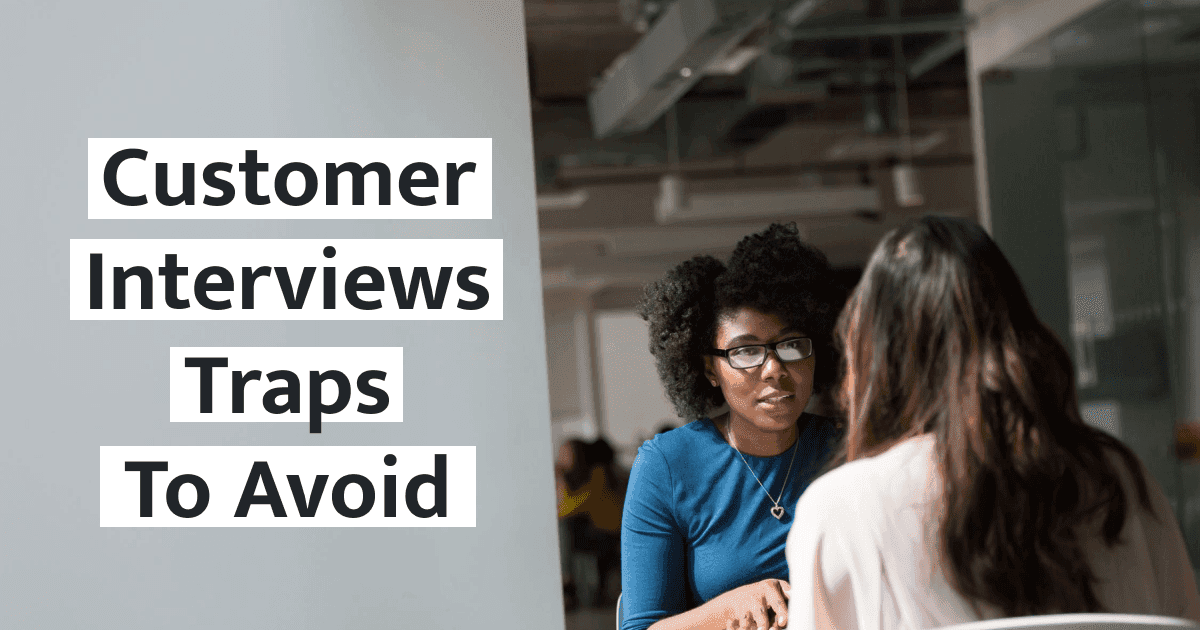Got to avoid these user interview traps

"Stay close to your users" has become the principle of building great products.
As a founder or product leader, are you obsessed with user interviews?
You likely have already read about the best practices to do them.
But having done 200+ user interviews in the last 18 months, I discovered that following the best practices wasn't enough, there were these frustrating traps that I learned to avoid.
And here are the top 4 for me.
Trap #1 - I was overdoing these interviews and lost sight of the meaning
I have been a big fan of "staying close to your users" and I took that to my heart.
Talking to potential users and existing users became a routine of mine when I was building Toasty. The more I did, the less time I had to prepare and analyze. Which meant at some point I wasn't even validating any hypothesis at these interviews.
I lost the meaning of these interviews and was doing them for the sake of "staying close".
How did that happen?
With an overwhelming plate as the CEO, I lost my consciousness in product discovery.
As I frequently met with potential and existing users, I lost track of whom I was speaking to and for what purpose.
Lesson learned. I needed to be clear about its objective before setting up an interview. And technically I only needed 5-10 interviews each time to validate one hypothesis and should have moved on to the next hypothesis regardless of the results.
Trap #2 - People were just so nice
The other reason I loved talking to people was that 90% of the people I met were amazing. They were generous in sharing and genuine in helping.
This was good, but also bad.
I got distracted by phrases like "What you're doing is interesting", "I love your idea." and "I will definitely try your product."
I took their words at face value and got excited ... and then I was blindsided.
People say "What users say and what they do are different". It is true.
I learned that we should have excluded their ideas and opinions from the interviews. What was more important was the facts. "I love your idea" didn't help with the validation; "I was doing X to solve Y" provided more insights.
I also learned that it was better to look for facial expressions, body language, and actual product usage to gauge whether they were interested. If they show excitement, curiosity, and urgency, or if they immediately check out or sign up for our product and start using it, then it is a sign that they're interested. Otherwise, despite all the kind words, they're really not.
Trap #3 - Never asked for solutions from customers
Henry Ford once said, that if he had asked his customers for new ideas, they would have told him to create faster horses. He didn't do that, and he created cars to replace horses.
Most of us understand that.
But when I was actually talking to customers, it was a very different story.
I was perfectly aware that I shouldn't ask them for ideas (learnings from the Mom Test, my favorite user interview book). We also had our own solution in mind already. But it was extremely hard to stay away from their constant "feature requests".
When people learned more about Toasty, it was natural for them to tell me how they would use Toasty only if we had A, B, and C.
And when I heard that, I got sidetracked. These ideas were tempting as they would make our product better.
I logged these "feature ideas" for our product team. But, we never acted immediately on them. We waited for more similar patterns before we designed and developed them.
Even though we knew how to handle these requests. The reality was since we were searching for product/market fit, these feature ideas were really just "small details". They would make us a 10% better product, but never a 10x better product.
And to create a successful product (and company), we needed to work on a 10x better product.
Lesson learned. I needed to break down the insights from customers into 2 tracks - 1 being facts and behaviors to lead us to a 10x product, the other 1 being feature ideas for immediate product enhancement.
Trap #4 - I didn't have a proper post-interview tactic
One of the rules of user interviews is to talk to people from the same segment. This way you can discover common patterns from the same type of people.
And once you get to know them, the best part is they become leads that you can convert when you're ready.
I was talking to almost a dozen people every week, and I didn't capitalize on this opportunity to help us generate leads.
I talked to people, and then we forgot about each other.
What a waste. After all, I had already turned cold leads into warm leads.
In early-stage startups, everything we do has to be super impactful because we are competing against time. One thing should lead to another, creating not linear, but exponential values. There is a concept called "System Thinking" and I plan to write about it later on!
Lesson learned. I should have set up a better plan to follow up with these interviewees, keep them in the loop, and incentivize them beyond the chat.
User interviews are hard
Because you're dealing with human beings, and each of them thinks differently. And to extract useful insights requires all the important skills like analytical listening and imagination.
Honestly, no one could get it right the first time, and I certainly learned it the hard way.
What are some other user interview traps that you've encountered?